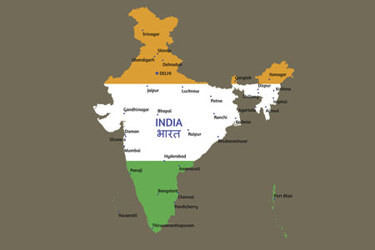India Aims To Boost Medical Device Industry With New Initiative
By Gunjan Bagla, Amritt Inc.

While India’s medical device industry has grown at a steady 14%–15% annually for most of the last decade, it only accounts for 1.5% of the global market. Now the country’s federal government has created a far-reaching policy with the goal of spiking growth to over 20% for the next decade.
Dubbed as a “Sunrise Sector,” the medical device industry was deemed so crucial that this new aim for a 20% annual growth rate for medical devices was approved during a cabinet meeting1 with the prime minister.
Driving Forces Of The Initiative
How can the world’s fifth largest economy and the most populous country on the planet sustain a 20% growth rate in medical devices? Rajiv Nath, forum coordinator of the Association of Indian Medical Device Industry (AiMED), based in Delhi, is confident and cites four reasons:
- The rising disease burden of chronic and lifestyle diseases globally will increase the demand from India as a manufacturing hub.
- The world’s largest public healthcare scheme, Ayushman Bharat, which earlier had an approximate 500 million people covered, now is adding another 400 million people in the middle-income bracket.
- India is seeing increased health insurance penetration in both the government and private setups.
- There is an increase in “medical tourism” due to affordable healthcare and availability of treatments availability.
Narayanan Suresh, chief operating officer of the Association of Biologically Enabled Enterprises (ABLE) in Bangalore, adds one more factor driving growth: “increased spending on preventive healthcare by affluent Indians, whose numbers are increasing,” creating a virtuous spiral.
At this author’s [Gunjan Bagla’s] company, Amritt, I am seeing a spike in American companies seeking manufacturing partnerships from India and away from China.
Streamlined Regulations
India’s byzantine medical device regulations are controlled by the Ministry of Health but also affected by the Ministry of Chemicals and Fertilizers; however, if you have electronics or batteries in your device, you may need approval from the Ministry of Electronics and Information Technology, if the tiniest bit of radioactivity is involved you better get approved by the Atomic Energy Regulatory Board, and, in some cases, the Department of Animal Husbandry and Dairying may need to provide approval. For a device with an embedded battery, my colleagues and I had to seek approval from the Bureau of Industrial Standards, which is part of the Ministry of Consumer Affairs.
The current government is driven to expand the ease of doing business in India and one key aspect is to establish so-called single window clearance systems using digital platforms. The vision is that any company or applicant would get everything needed in one digital location without having to go to individual federal ministries, federal departments, or state governments. The applicant would be able to upload all documents in a secure online depository and reuse their documents in multiple situations as needed. Status updates would be provided in real time and renewals would be seamless.
If this comes to fruition, it will be a major relief to foreign and Indian companies alike. This change may take more than two years to actualize, in my experience.
Pavan Choudary, chairman of the Medical Technology Association of India (MTAI), is optimistic that the “medical device policy aims to streamline the regulatory framework by creating a single window clearance system.” MTAI’s membership consists largely of multinational companies operating in India.
Push For New Manufacturing Capacity
A huge benefit offered by the Indian government is the PLI or Production Linked Incentive.2 Companies that create new manufacturing capacity in India are offered financial rewards based on how much they produce in India. The objective is to create 6 million jobs and offer almost $3 billion in subsidies to manufacturers. While this is spread across 13 industrial sectors, the first three announced included medical devices.
Abbott, BD (Becton Dickinson), Baxter, GE Healthcare, Toshiba Medical, and others have had factories in India for decades. The pace is picking up now. My colleagues and I recently helped an orthopedic related device company to expand manufacturing in India via a supply chain partner who specializes in hiring staff with disabilities, for example.
In a 5,000-year-old country, finding land with clear titles to build a factory is often a challenge. Rezoning farmland in most of India’s states is not for the faint of heart. One way to have certainty on this issue is to locate in an area that a state or local government has already acquired and is offering up for industrial use. It is with this in mind that the Medical Device Policy will support the development of four large medical device parks located in:
- Himachal Pradesh, a northern state in the Himalayan foothills. The state is already home to factories serving consumer product giants such as L’Oreal and many makers of drugs and dietary supplements.
- Uttar Pradesh, a province with the population of Brazil, located in the plains of the Ganges River.
- The central state Madhya Pradesh, also known for India’s cleanest city, Indore.
- Tamil Nadu, on the southeastern coast, which is known for automotive and electronics manufacturing.
A “park” in this context implies an industrial estate, with roads, electricity, plumbing, etc., already provided. A medical device park is likely to attract third-party supply chain partners such as test labs, sterilization facilities, prototype shops, etc.
Choudary of MTAI asserts that the creation of common infrastructure near clusters of medical device manufacturers will develop an ecosystem of ancillary suppliers to the manufacturers and accelerate the growth of the industry as a whole.
Stronger Opportunities For International Medical Device R&D Collaborations
India has developed a vibrant medical device startup ecosystem in the last decade. A number of these startup CEOs emerged from former employees of Boston Scientific, GE, J&J, and others. Rajiv Nath of AiMED adds that India has a special advantage in developing “innovative products focusing on digitally enabled devices, miniaturization, wearables, etc., which offer opportunity to leverage Indian IT skills and ecosystem to capture higher value.” ABLE's Suresh expects that global “companies will look out for innovative startups that could be acquired or collaborations initiated for large scale manufacturing to take advantage of fiscal incentives available in the policy.”
I used to teach an executive workshop on Doing Business in India at Caltech and one of the early attendees was a manager from a $12 billion company called Covidien. This led to a six-year business relationship in expanding their R&D skills in India. The most prominent result of this is what is now called the Medtronic Engineering and Innovation Center (Medtronic purchased Covidien). During this process we had little help from the government. Today, the scenario is much easier for new entrants.
The new Medical Device Policy encourages global companies to establish R&D centers and collaborations in India. In email correspondence with Nath, I was pleased to see his comment that “Medtronic, a large U.S. conglomerate has already set up its India Innovation center in Hyderabad. Boston Scientific has its second largest R&D center in Pune, and more, including designated Centers of Excellences [established] by U.S., U.K., Japanese, Korean, and Australian academic and research institutions, which will explore emerging areas such as artificial intelligence, the Internet of Things (IoT), and nanotechnology.”
Can Small And Midsize Companies Benefit From India?
Most of the examples mentioned so far refer to multibillion-dollar players, but much of the innovation in medical technology emerges from venture-funded startups and midsize American companies. Device makers that don’t have sufficient capital to invest overseas can license their technologies, create technical collaborations or joint ventures, or establish royalty-based returns. My colleagues and I have helped many companies do this while protecting their intellectual property and choosing trustworthy Indian partners. This approach can help small and midsize American companies to scale their revenue rapidly and to expand to Asian markets outside India.
Choudary outlines the process for companies with totally innovative products: “If the device is serving a completely new purpose for which there does not exist any predicate technology in India, then the applicant needs to submit an application for an investigational new device. Depending on the product approval status in either of the global harmonization task force countries, a subject expert committee shall ask the applicant to perform either a pre-market or post market study.”
In order to grow its medical device ecosystem at 20% annually for a sustained period of time, India needs to train and induct large numbers of young employees into the workforce. Since these workers need to operate at global standards, there are ways for American entities to help. For human resource development, given the specialized skillset required for the medical devices industry, the Strategy Document encourages private global schools to teach design-focused courses and further encourages academic institutions to build partnerships with foreign organizations to develop medical technologies, according to Nath.
Conclusion
In a fast-changing world, medical device companies need to look beyond Europe, Japan, and China for international opportunities; India only entered the top 10 economies by GDP in the last decade and has quickly risen to be number five. India is now an attractive market and is also a desirable supply chain partner to serve local and global markets. Indian technical talent is driving innovation in medical devices being sold worldwide. Your competitors are already in India directly or via partners. For many players, waiting to engage with India may be an expensive mistake. Fortunately, the Indian government has laid out the welcome mat for global entrants to India in the medtech sector.
References
- Cabinet approves the Policy for the Medical Devices Sector https://pib.gov.in/PressReleaseIframePage.aspx?PRID=1919984
- PM Modi addresses webinar on Production Linked Incentives scheme https://www.youtube.com/live/baVuoXpxuXw?si=nmB5k9f9Si08NeXs webinar by Indian Prime Minister (in Hindi/English)
About The Author:
 Gunjan Bagla is CEO of Amritt, Inc., a California-based consulting firm that helps Western companies do business in India. Organizations that have benefited from Amritt's expertise include Becton Dickinson (BD), Biocom California, Combe, Clorox Healthcare, Johnson & Johnson, iHealth, and Roche. He writes about India for the Harvard Business Review and for Med Device Online. He holds a mechanical engineering degree from the Indian Institute of Technology Kanpur and an MBA with honors from Southern Illinois University, Edwardsville. Gunjan is a frequent speaker on subjects relating to India’s healthcare, biotech, and medical device ecosystem. You can reach him on LinkedIn.
Gunjan Bagla is CEO of Amritt, Inc., a California-based consulting firm that helps Western companies do business in India. Organizations that have benefited from Amritt's expertise include Becton Dickinson (BD), Biocom California, Combe, Clorox Healthcare, Johnson & Johnson, iHealth, and Roche. He writes about India for the Harvard Business Review and for Med Device Online. He holds a mechanical engineering degree from the Indian Institute of Technology Kanpur and an MBA with honors from Southern Illinois University, Edwardsville. Gunjan is a frequent speaker on subjects relating to India’s healthcare, biotech, and medical device ecosystem. You can reach him on LinkedIn.
